Cauliflower pests and diseases: The best remedies
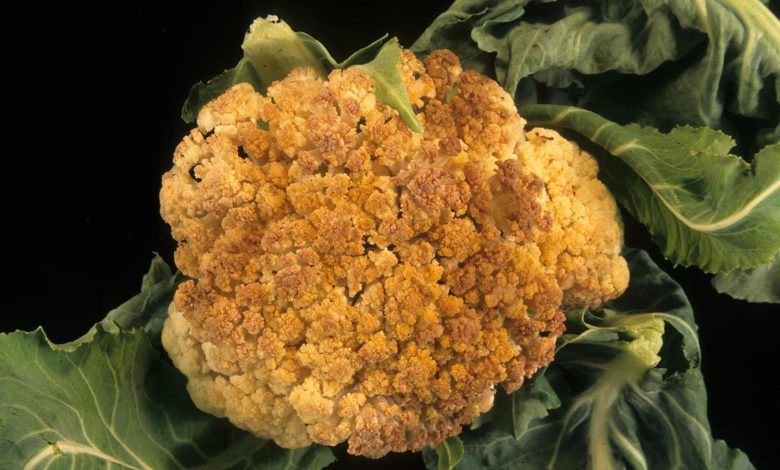
Hello to all agrohuerters! In today’s article we are going to learn about the most common cauliflower pests and diseases and how we can eliminate them. First of all, I would like us to remember some facts about cauliflower (scientific name: Brassica oleracea), which were mentioned in previous articles: Cauliflower is a cruciferous plant, like broccoli, cabbage or radish, with short taproots.
They are vegetables that take up a lot, have large leaves and, in the center, is where the white inflorescence that we consume as food comes out.

Once we have all the crop in mind, we move on to cauliflower pests and diseases.
1. Pests and diseases of cauliflower: most important pests
caterpillars on cauliflower
The Lepidoptera family (butterflies and moths) are one of the main pests of chloriflores. Above all, they attack in their larval state, that is, before they become butterflies. The most common damage is bites on the leaves.
The most harmful species for this crop are:
- Pieris brassicae: can cause the plant to rot. Its adult form is characterized mainly by being white and having two black dots on its wings.
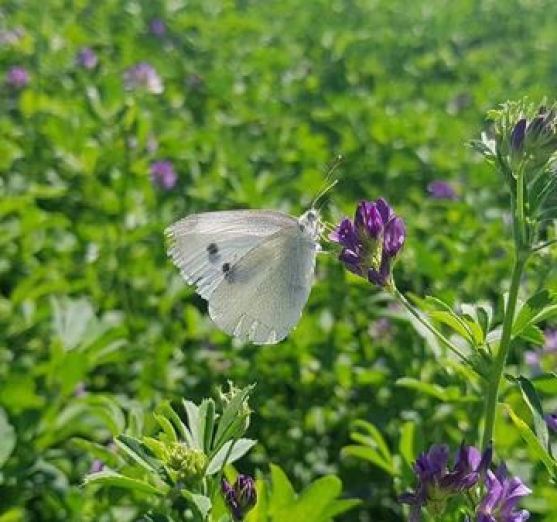
- Mamestra brassicae: it is a nocturnal species and feeds on the tender leaves of the plant.
- Plutella xylostella: the butterfly is gray in color, it has nocturnal habits and the larvae are characterized by being very mobile.
- hellula undalis
Regarding control methods, the use of pheromones or light bulbs stands out. Also, it is important to detect small larvae as soon as possible in order to act more quickly.
Cauliflower with whiteflies (Aleurodes brassicae)
Whiteflies are generally located on the underside of leaves. This species has the peculiarity that, unlike other species, it resists low temperatures very well.
The main damages they cause to crops are:
- Extraction of sap from the plant.
- mechanical damage
- They produce molasses.
- Some species are disease vectors.
The best control method is prevention. Therefore, it is important that you check the underside of the leaves from time to time in order to act as soon as possible. In addition, there are various methods of whitefly control such as chromatic traps, natural predators, infusion of wormwood, garlic, etc.
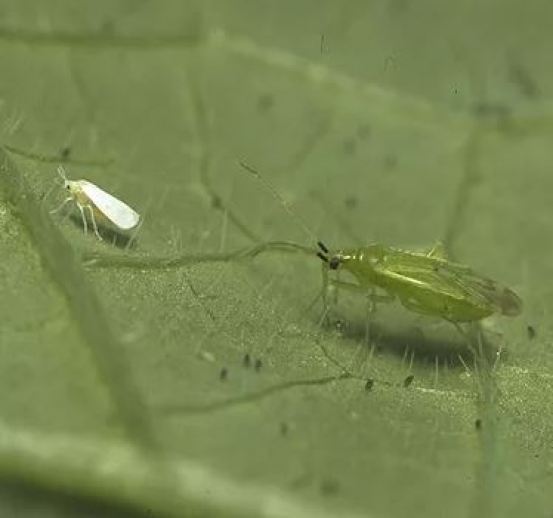
Sticky Bugs: Cauliflower Waxy Aphid
Aphids belong to the aphid family and, as we have seen in other articles, they are one of the most common pests in orchards and gardens. They are small in size (1-3 mm in length) and can have different colors depending on the species to which they belong. They attack the young shoots of crops with a high sugar content.
The larvae cause damage by making galleries in the leaves of plants. As for the adults, they feed by sucking the sap from the leaves, buds and young shoots using the stylet of their mouthparts. In addition, they excrete a sticky, sugary liquid called honeydew that attracts ants. They favor the appearance of a fungus known as bold and can also transmit viruses from one plant to another.
The most important in cauliflower cultivation is the » waxy aphid «, characteristic for secreting a whitish waxy substance. This species can be very numerous and usually attack in limited foci. If the pest is very important they can kill the plant.
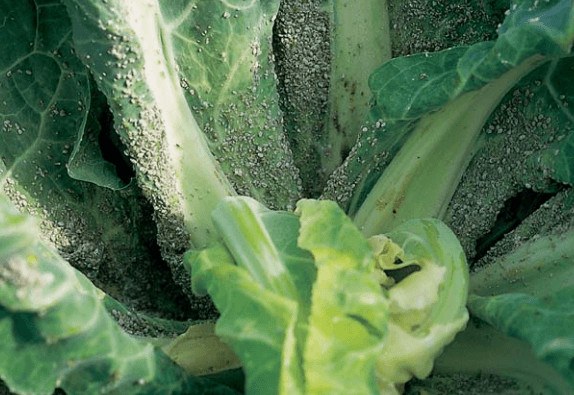
2. Cauliflower diseases
Cauliflower brown spots: downy mildew
One of the fungi that affects chloriflor is Mildew. This fungus also affects other types of cruciferous crops such as broccoli, radishes, turnips,… It can be affected by the fungus at any stage of growth. However, due to the conditions that require cold and humidity to develop, it usually appears as a seedling and in mature plants. It produces greasy-looking spots of different shades on the leaves, which then turn brown and wither.
To control this disease we must prevent transplanted plants from being infected and it is recommended to choose varieties resistant to this disease.
In the following image you can see the appearance of a cauliflower plant affected by mildew.
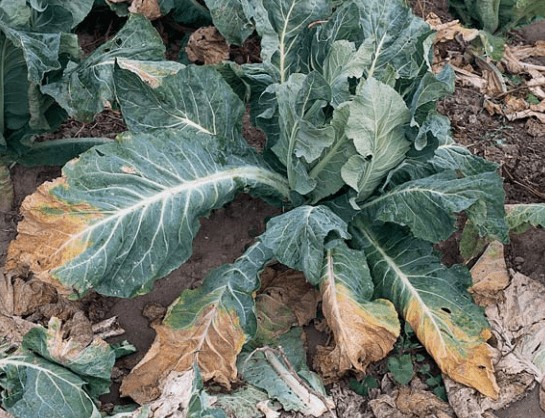
Rotten cauliflower: bacterial diseases
Cauliflower is not free from bacterial diseases and if the humidity and temperature conditions are favorable they can cause serious damage.
The most important bacteria that affect this crop are:
- Xanthomonas
- Pseudomonas
- erwinia
- Rhodococcus
Control methods for this type of disease are based on employing preventive measures (using certified seed, cultivating in soils free of these bacteria, keeping the field free of wild cruciferous plants, quickly destroying infected foci,…)
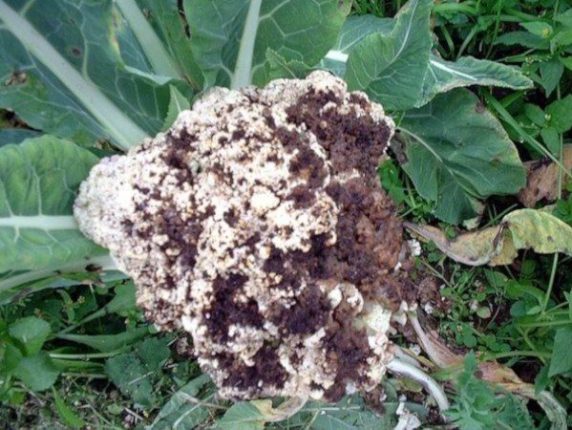
References
- Khaling E, Papazian S, Poelman E, Holopainen J, Albrectsen B, Blande J (2015).Ozone affects growth and development of Pieris brassicae on the wild host plant Brassica nigra. Environmental Pollution, 199,119-129.
- Weinberger, K., Srinivasan, R. (2009). Farmers’ management of cabbage and cauliflower pests in India and their approaches to crop protection, Journal of Asia-Pacific Entomology, 12(4), 253-259.
- Batabyal, K., Mandal, B., Sarkar, D., Murmu, S., Tamang, A., Das, Hazra, G., Chattopadhyay, P. (2016). Comprehensive assessment of nutrient management technologies for cauliflower production under subtropical conditions, European Journal of Agronomy, 79, 1-13.
This is all for today, see you in the next article.
Have a nice day!

![Photo of Celandine: [Cultivation, Irrigation, Care, Pests and Diseases]](https://www.complete-gardening.com/wp-content/uploads/2021/06/celidonia_1619476633-390x220.jpg)


![Photo of Cardón: [Cultivation, Irrigation, Care, Pests and Diseases]](https://www.complete-gardening.com/wp-content/uploads/2022/08/cardon-cultivation-irrigation-care-pests-and-diseases-390x220.png)